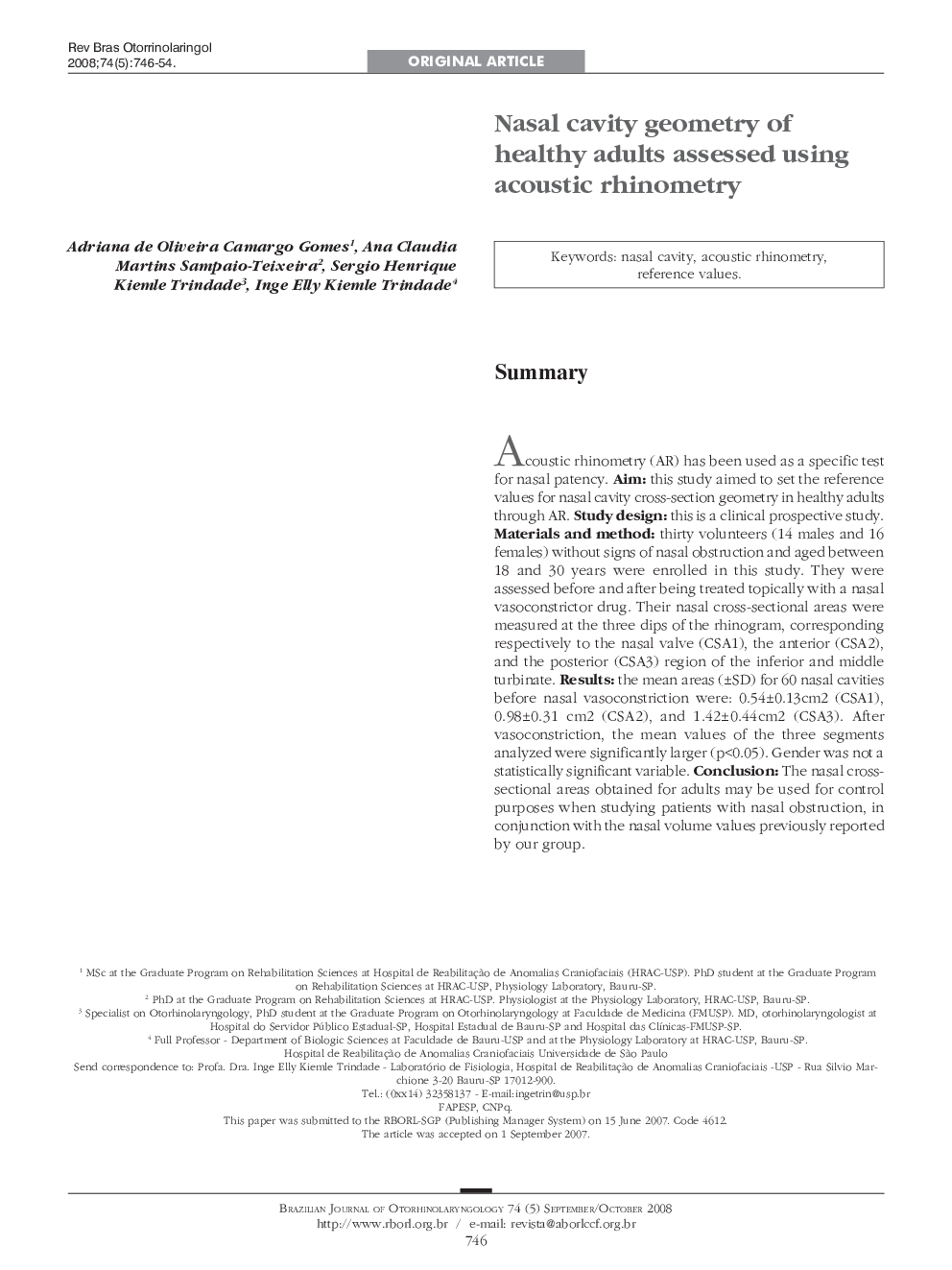| Article ID | Journal | Published Year | Pages | File Type |
|---|---|---|---|---|
| 4107032 | Brazilian Journal of Otorhinolaryngology | 2008 | 9 Pages |
SummaryAcoustic rhinometry (AR) has been used as a specific test for nasal patency.Aimthis study aimed to set the reference values for nasal cavity cross-section geometry in healthy adults through AR.Study designthis is a clinical prospective study.Materials and methodthirty volunteers (14 males and 16 females) without signs of nasal obstruction and aged between 18 and 30 years were enrolled in this study. They were assessed before and after being treated topically with a nasal vasoconstrictor drug. Their nasal cross-sectional areas were measured at the three dips of the rhinogram, corresponding respectively to the nasal valve (CSA1), the anterior (CSA2), and the posterior (CSA3) region of the inferior and middle turbinate.Resultsthe mean areas (±SD) for 60 nasal cavities before nasal vasoconstriction were: 0.54±0.13cm2 (CSA1), 0.98±0.31 cm2 (CSA2), and 1.42±0.44cm2 (CSA3). After vasoconstriction, the mean values of the three segments analyzed were significantly larger (p<0.05). Gender was not a statistically significant variable.ConclusionThe nasal cross-sectional areas obtained for adults may be used for control purposes when studying patients with nasal obstruction, in conjunction with the nasal volume values previously reported by our group.
